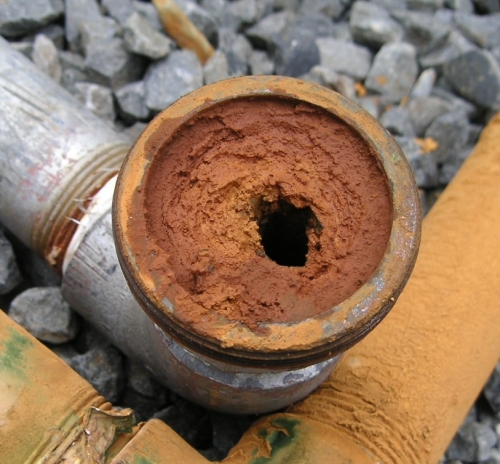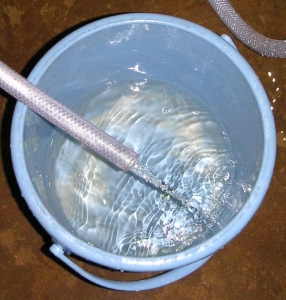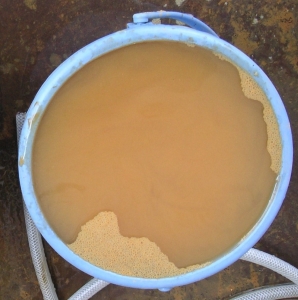Tech & Tools
Technical information
- HOME
- Tech & Tools
- Removal of iron and manganese from groundwater
Removal of iron and manganese from groundwater
General groundwater in Japan almost always contains iron and manganese. This is because iron and manganese have a higher dissolved amount in the crust than other metals, and are easily dissolved by carbon dioxide in the groundwater and mixed into the groundwater.
Since groundwater has an anaerobic atmosphere underground, iron and manganese exist in the form of low-charge ions and are colorless and transparent. However, when pumped to the ground, it develops color by being oxidized by oxygen in the air and oxidizing agents such as sodium hypochlorite, and also produces insoluble inorganic compounds.
For example, the photo below shows water containing about 30mg/L of iron. Immediately after pumping, it is colorless and transparent as shown in the photo on the left, but when left for several hours, it is colored reddish brown as shown in the photo on the right. This is because divalent iron ions in water are oxidized to trivalent insoluble ferric hydroxide (Fe(OH)3) and precipitate.
In addition to these coloring disorders, if water containing iron or manganese is used, oxides of iron or manganese may adhere to the pipe and block the pipe as shown in the photo below. Care must be taken because if the piping is blocked, problems such as not being able to obtain the specified amount of water and contamination of deposits may occur.

Therefore, if the groundwater contains iron or manganese, it is necessary to remove them promptly. In the case of tap water, it is obligatory to treat iron up to 0.3mg/L and manganese up to 0.05mg/L as a drinking water conformity standard.
Head Office
1-12-11 Tagawakita, Yodogawa-ku,Osaka
532-0021
Overseas Business Department
TEL +81-6-6301-6460
FAX +81-6-6308-3022






